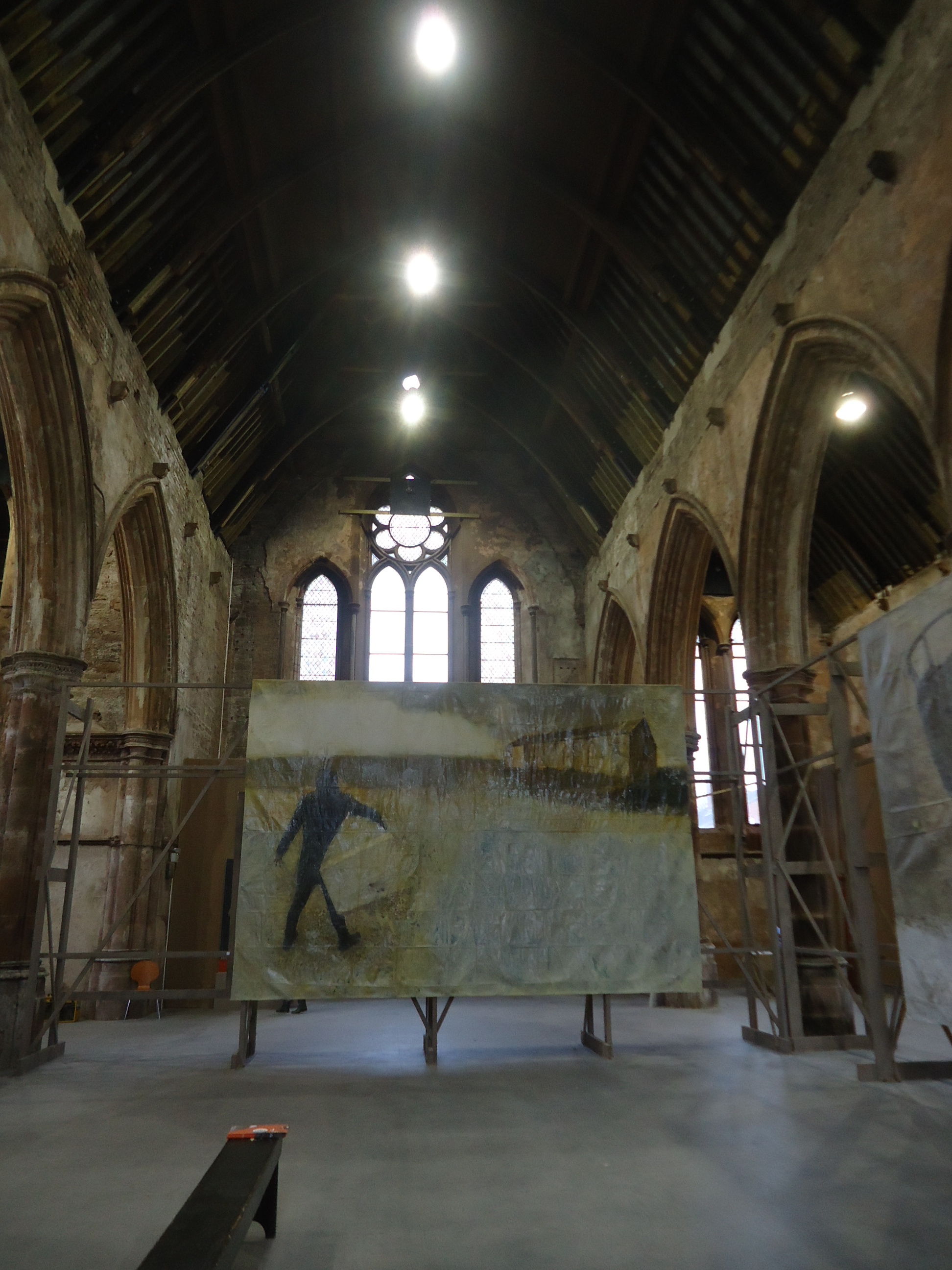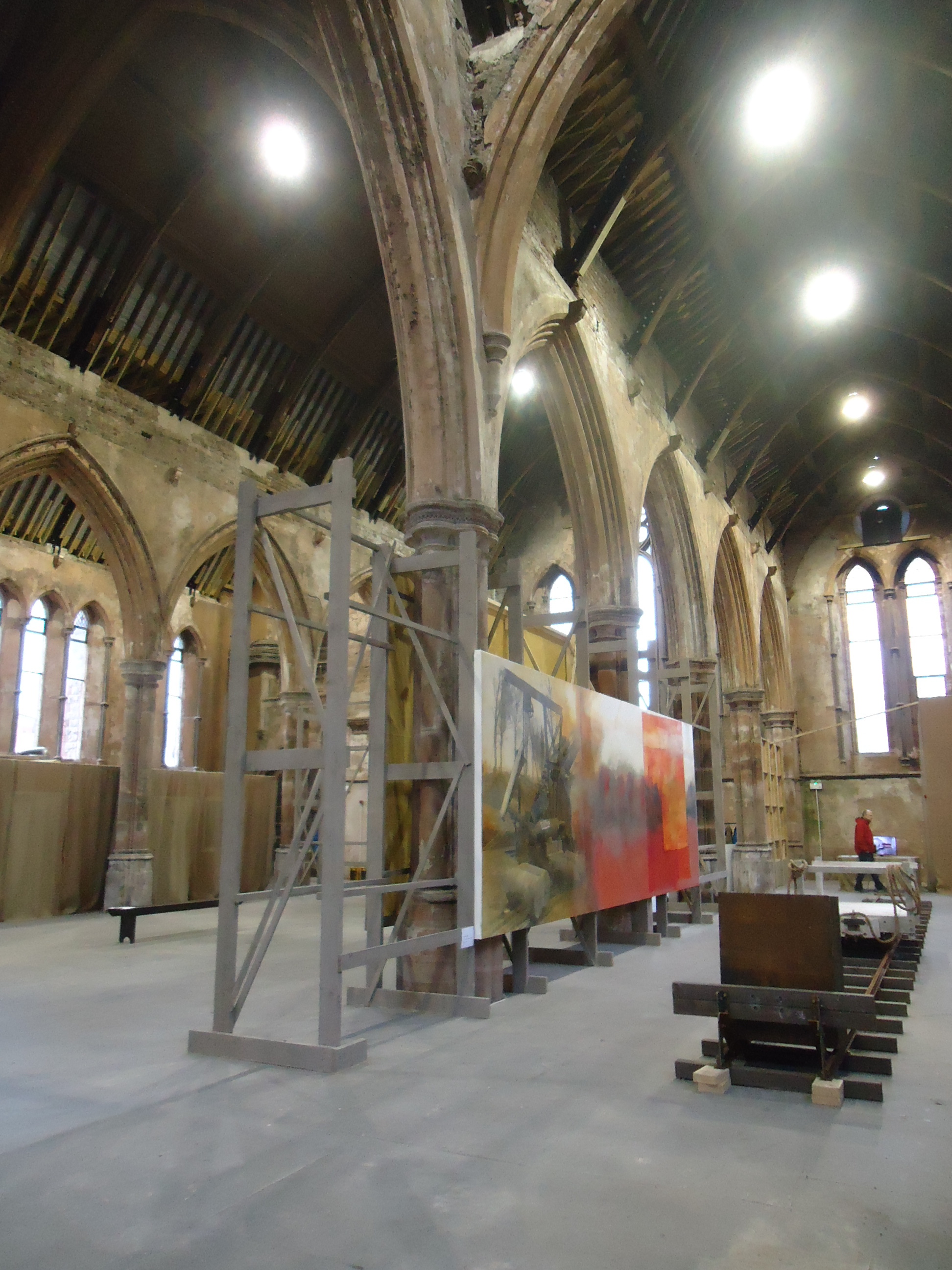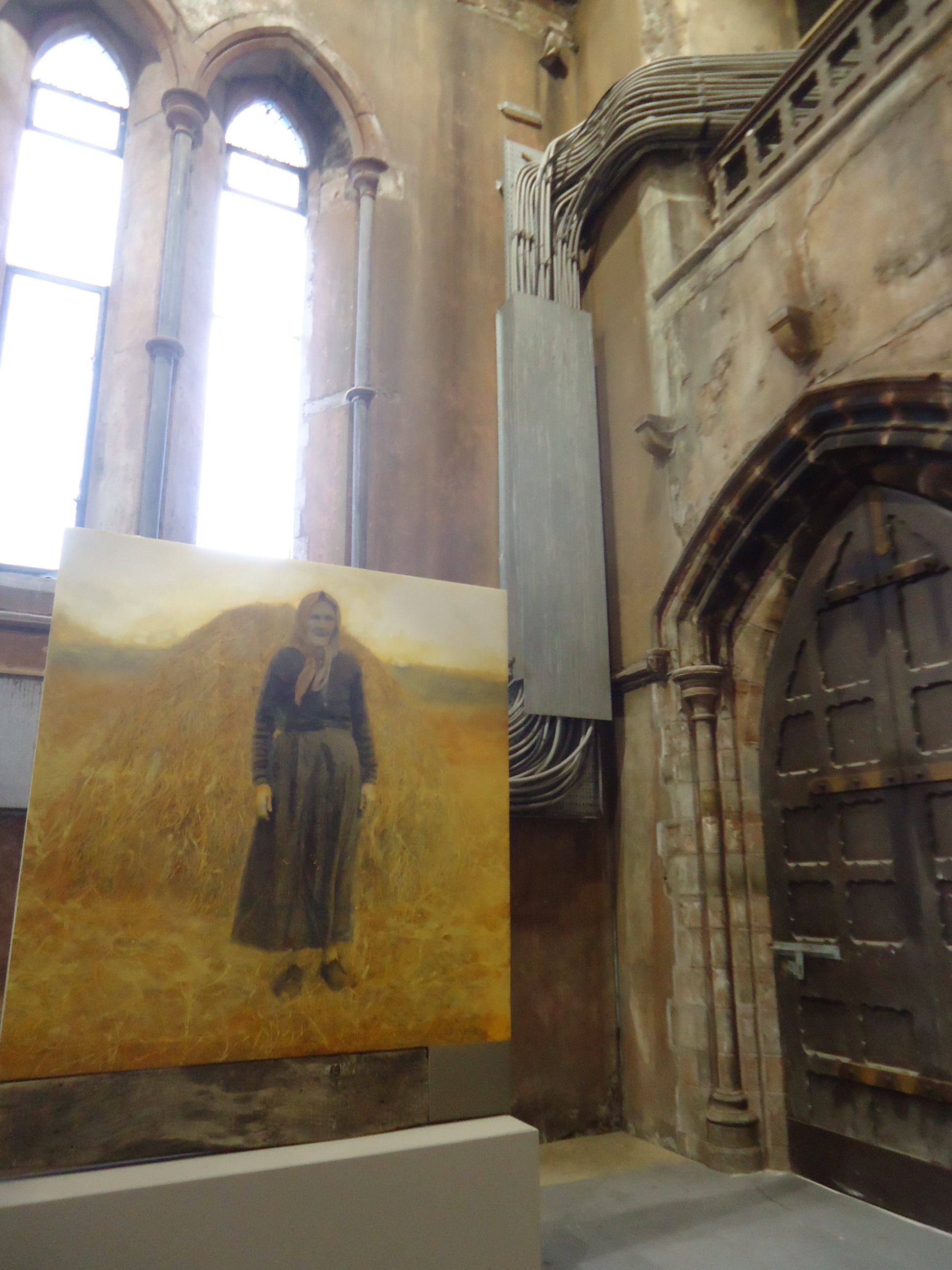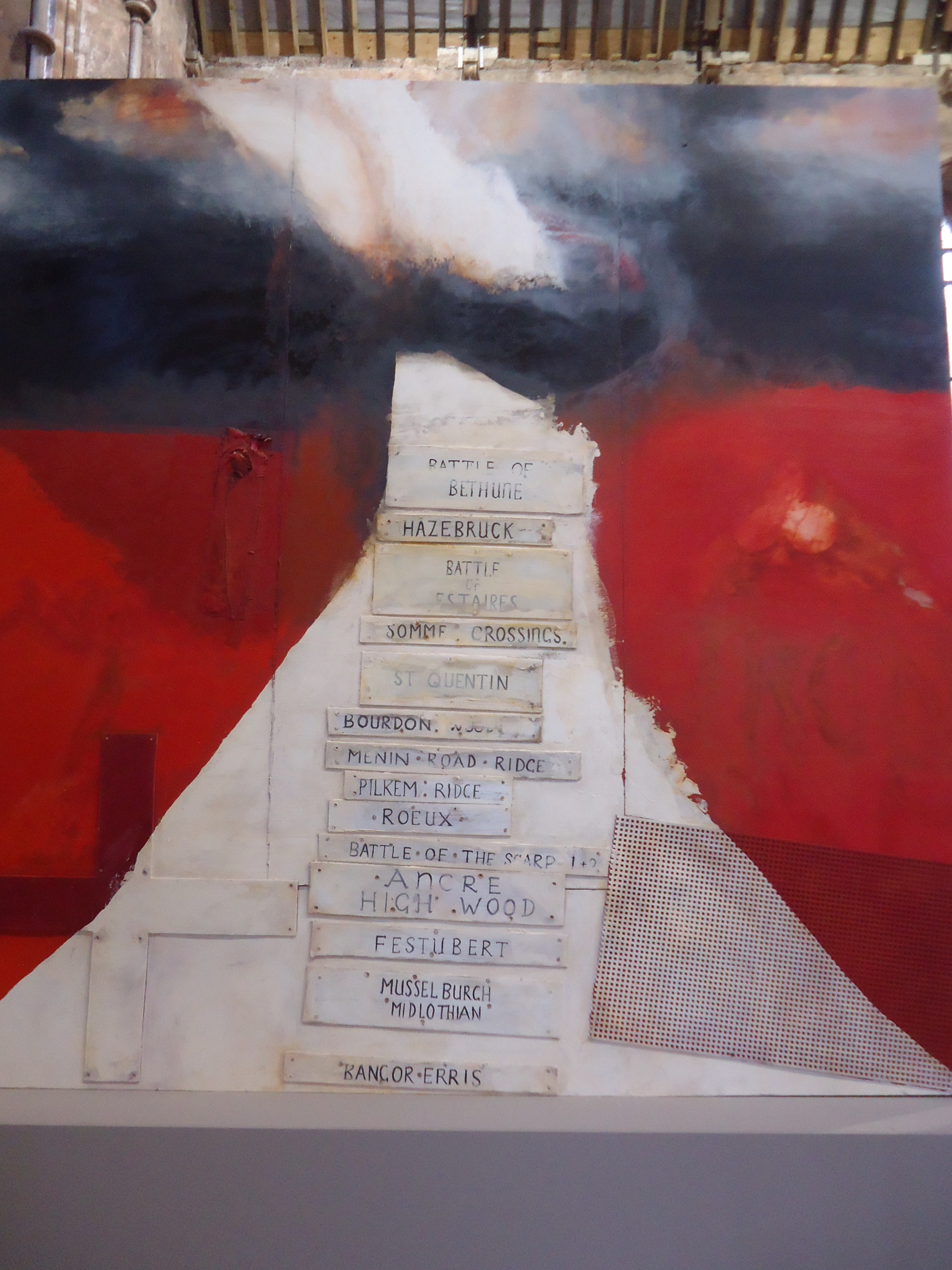Hughie O'Donoghue
After Marco’s burial yesterday, we went to an exhibit I had heard about Friday night. It was closing yesterday so we saw it right before the carpenter came to take down the scaffolding. It was in an old church that has been vacant for many years and is now stabilised but not fully restored.
O’Donoghue’s father and uncle fought in the First World War. This exhibit reflected on their experiences.
It took as its inspiration Kurosawa’s Rashomon, which tells the tale of a man’s murder from four perspectives, a thief’s, a carpenter’s, his wife’s, and his own. O’Donoghue’s perspectives are a sailer, a soldier, a railwayman, and a farmer.
The railway car is accompanied by a video of a similar car being used in war time to cart dead and wounded soldiers.
The image above is of his grandmother. I like how this ancient image is next to scores of cables, I assume to light the massive church.
In the image above, O’Donoghue’s uncle’s life is represented, from bottom to top, by where he was born, where he lived as a young man, and then all the battles he fought in, including the battle in which he died.
I am literal to a fault so I have a hard time understanding a lot of art. But this one was pretty clear.
I was as taken by the cavernous church as by the works of art. O’Donoghue taught David’s sister and her husband when they were art students back in the 1980s. We stayed to meet O’Donoghue but, by the time he arrived, David had retreated to the car. He is pretty shaken up by witnessing Marco’s final moments, as you would be. I could have introduced myself to the man but I didn’t know what to say.
10-29




